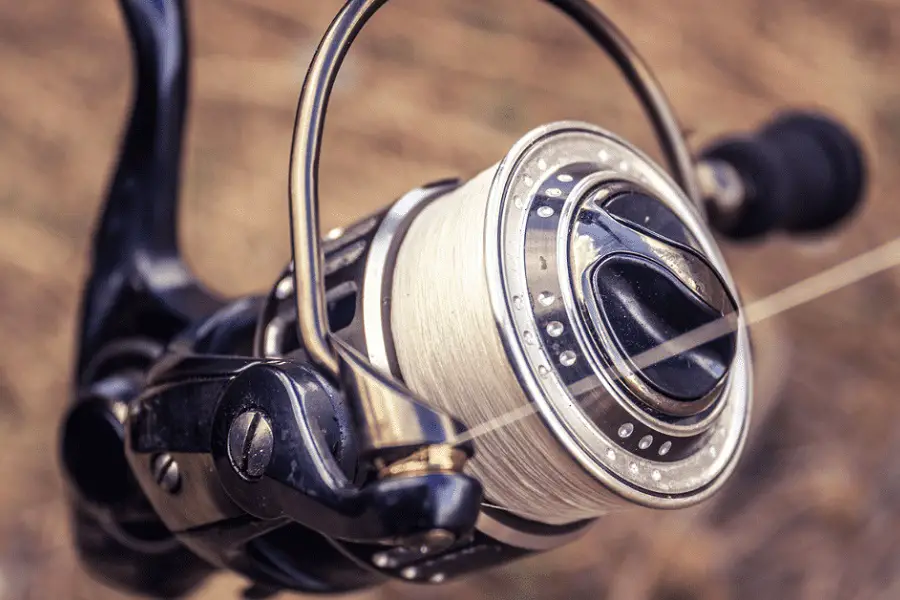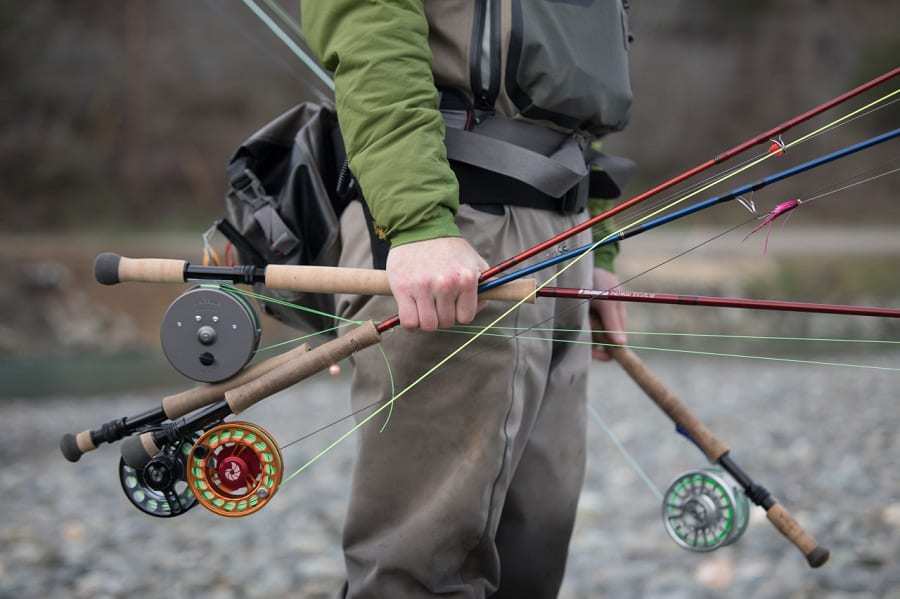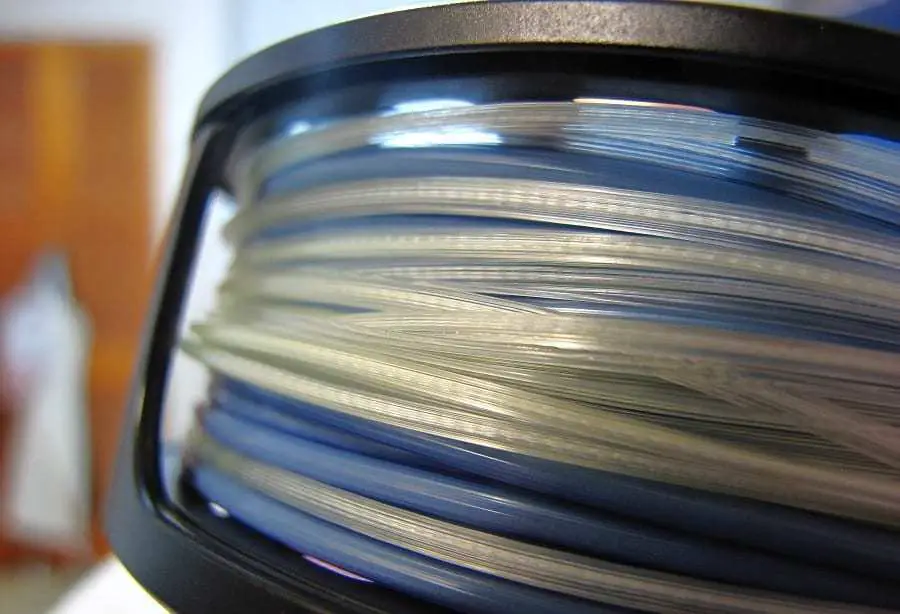Are you looking to purchase a spinning reel but aren’t sure about the different parts? Maybe you need a new reel but aren’t sure which is the right one.
Whatever your reason might be, we have the answer for you!
We know how challenging finding a new spinning reel can be, especially if you aren’t familiar with the terminology or what your line should have.
Before you know it, you are in an endless cycle of scrolling and screaming, unable to find the right reel for you.
Well, no more! Today we are here with a list of all the parts of a spinning reel, an explanation of what they do, and some top tips to help you buy the best reel for you! Keep reading to find out more and get your new reel today.
Most important parts of a spinning reel
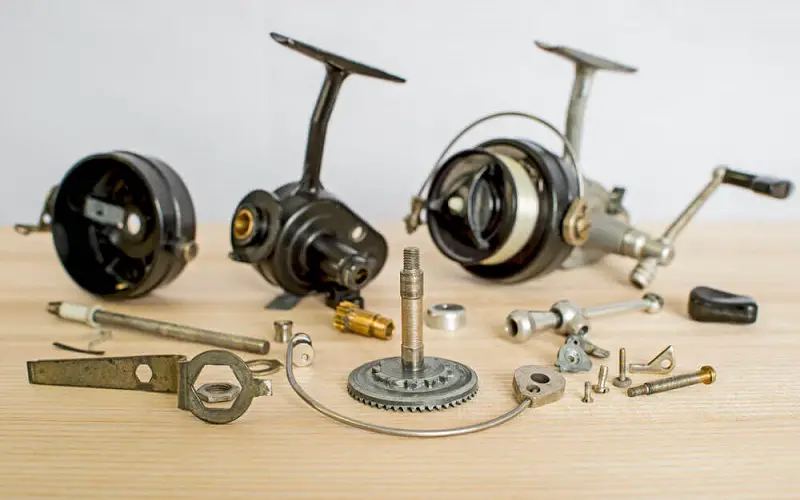
Below is a list of the most important parts of a fishing reel! These are the parts you should be aware of when selecting your new reel.
- Anti-reverse switch
- Bail arm
- Body
- Drag adjustment knob
- Foot
- Handle
- Line roller
- Spool
Spinning reel parts diagram
Below we have a diagram of the spinning reel, with its parts labeled for you to see!
A visual is always handy for you to see the parts in relation to each other. There will also be a diagram in the user manual of your reel, which you can use for further guidance should you need it! `
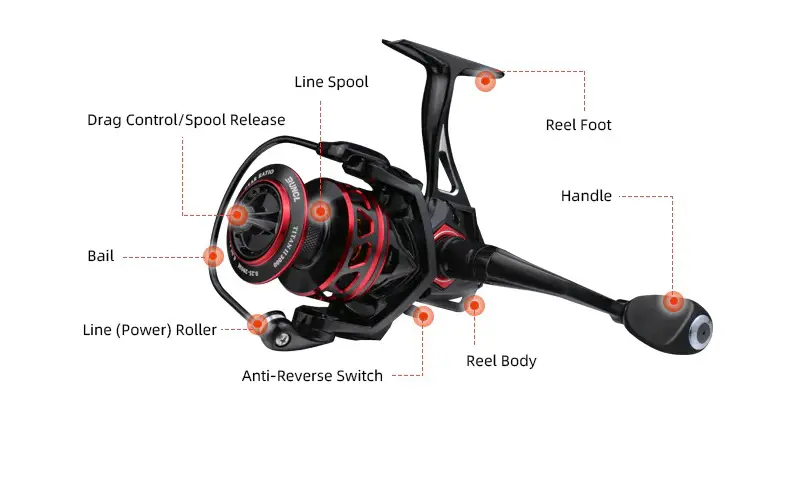
Your spinning reel also has some internal parts that you should be aware of. They are:
- The ball bearings
- The drag system
- The gearbox
These internal parts are some of the most important parts of a fishing reel. To help you learn more about them, let’s take a closer look at these components now!
Fishing reel ball bearings explained
Ball bearings are a vital part of the spinning reel. They are kept in the housing, and their job is to reduce friction when the spool rotates.
You will enjoy enhanced stability by reducing friction, and your reel will have a smoother retrieval action. The more ball bearings you have, the smoother your reel should be!
Some reels will also have a roller bearing inside the line roller to further aid with smoothness! Keep an eye out for the number of ball bearings when shopping for your reel.
Drag system explained
The drag system will allow you to adjust the pressure on the line spool. It works to control the pressure on the line while you are fighting with fish!
Also, your drag system will allow large fish to pull lines off the spool when there’s a powerful run!
You will want a drag system with plenty of adjustment options that are easy to adjust, so you don’t need to fuss about when you are fighting a fish!
If you don’t have a smooth and strong drag system, it can be difficult to let the line out during a battle. Your drag can get stuck, breaking the line! You will also find that it’s harder to set the hook when a fish grabs your lure.
Anti-reverse switch on a spinning reel
Your anti-reverse switch works to stop the handle from rotating backward. The hook can then be set with more power, boosting your chances of hooking a fish!
When it comes to purchasing a top-quality reel, this is a key feature you want to be looking for!
What makes a good spinning reel?
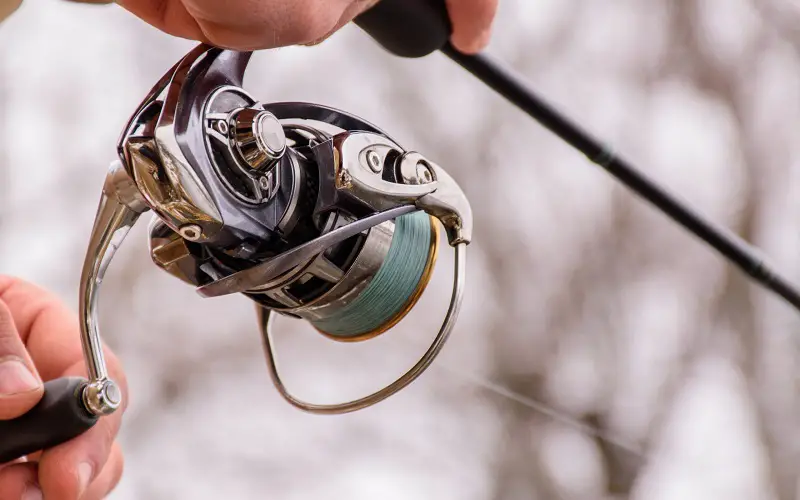
Now that we have covered the parts of a spinning reel and explained what they do, let’s look at what you should look for when purchasing a good spinning reel.
You will want to consider a few factors to ensure that you find the best reel for you.
First, you will need to choose the right size. Spinning reels come in a wide range of sizes for you to choose from, so you are sure to find the right size for you!
If you aren’t sure what size is best, it’s best to head in-store and try a few out or speak to some experts that can advise you further.
Once you have chosen the right size for you, use our following guide to know what else to look out for and make the right choice today!
Material and weight
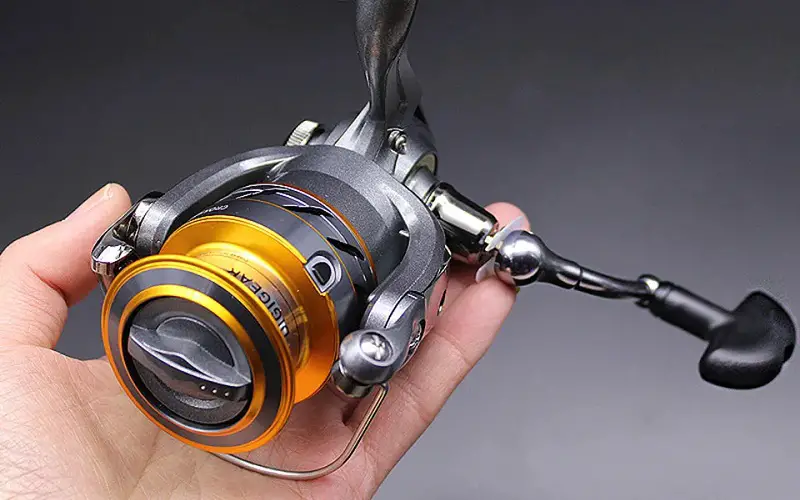
First, you will want to consider the material and weight of the spinning reel. Spinning reels usually feature graphite or aluminum housing, sometimes with a mixture of the two!
Aluminum tends to be harder than graphite and will make a more durable reel.
However, it is heavier and can be challenging for some users to handle. Graphite, on the other hand, although less durable, is considerably lighter.
So which should you opt for? It depends on the use! In some cases, a lightweight reel is better than a stronger one.
If you intend to spend hours fishing, you will want a lighter reel that is easier to handle. Be sure when shopping for your reel to check the weight before you purchase!
The weight is usually given in ounces or pounds. If you are making your purchase in-store, then hold the reel in your hand to check if the weight is right for you.
Gear ratio
Next, we have a gear ratio! The bail rotates around the spool as you turn the handle in a spinning reel, unlike baitcasting reels.
The gear ratio will tell you how many times the bail rotates around the spool in one single turn of the handle. A ratio of 6:1 tells you that the bail rotates six times around the spool in one turn of the handle.
Knowing how the gear ratio works will help you determine which ratio is better suited to the type of fishing you want to do!
What gear ratio should you look for?
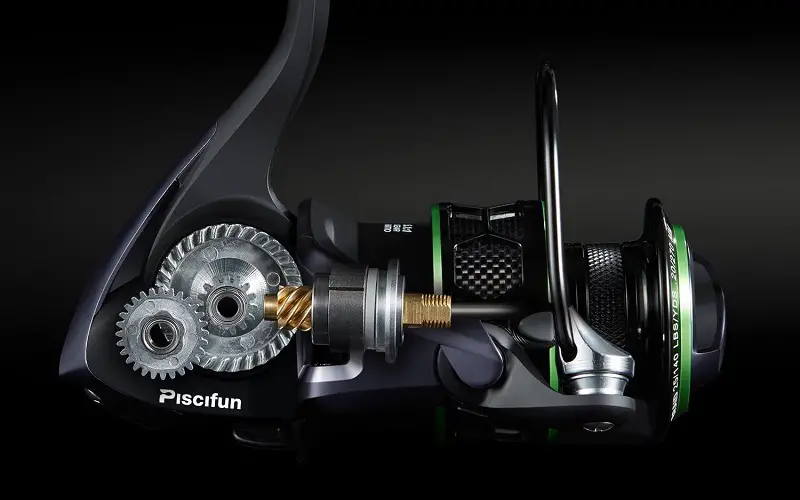
So, what gear ratio should a spinning reel have? It depends on the type of fishing you are doing! If you are working with strong lures and fast retrievals, you will want a ratio of 7:1.
The higher the first number is, the faster the ratio will be. A ratio of 4:1 is considered to be quite slow and will only have a short line length rolled onto the spool as the handle turns over.
However, this can be useful when battling large fish, as it will give you more power.
It’s best to consider the type of fishing you plan to do when selecting your gear ratio. If you plan to use the spinning reel for all your fishing needs, then a ratio of 5:1 will be plenty.
We consider this a medium speed and should cover most of your fishing needs.
For those planning to purchase multiple spinning reels, we suggest getting both a slow-speed and high-speed model to ensure all your needs are met.
Ball bearings
Generally, the more ball bearings you have, the smoother your spinning reel will be. It’s worth noting that the price of the reel can increase the more ball bearings there are.
Ideally, you want a reel with four or five ball bearings to deliver a smooth action. The last thing you want is a jerky reel when you are trying to retrieve a catch! When it comes to your ball bearings, go for as many as you can afford.
Spool material
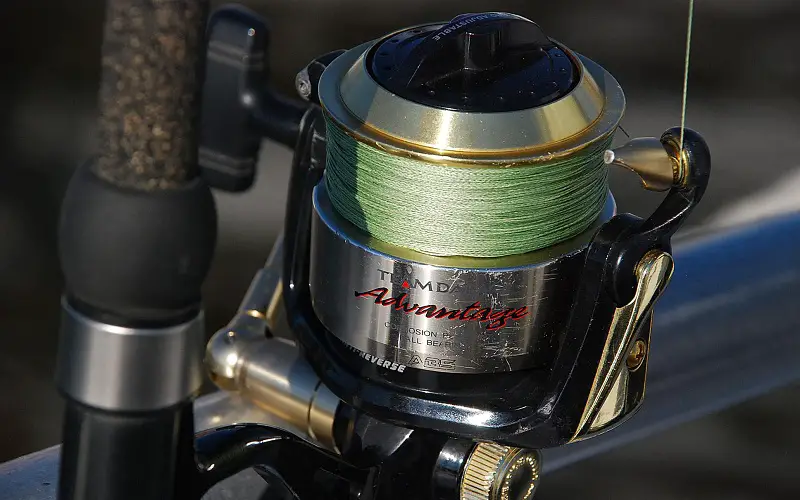
The material and design of your spool also play a role in the performance of the spinning reel. These are usually made from graphite or aluminum, like the reel bodies.
Aluminum spools will be stronger and more rigid than graphite, but graphite will be lighter. Spooling a spinning reel is easier with a graphite spool, too, as the line doesn’t slide as much.
When deciding which material, it’s worth considering these factors and your budget too!
Drag system
Ideally, you want a drag system that is easy to adjust and one that will let the line out smoothly with minimal jerking. If your drag system isn’t up to scratch, you can find it very difficult to fish! Why make it harder for yourself than it needs to be?
Reel handle
Finally, we have the reel handle. You should look for a reel that has a large knob, as this will give you a stronger grip on the handle.
At the same time, it should improve your grip and reduce the chance of slippage.
Longer handles will also give you more leverage when reeling a line than short handles, so keep this in mind.
Conclusion
And there you have it, the parts of a spinning reel and what you should look out for when purchasing a new reel!
Understanding how the basics work will help you shop savvier and make the right choice for you! Be sure to use our article today as guidance, and remember to buy the best reel for you and your budget!
References:


